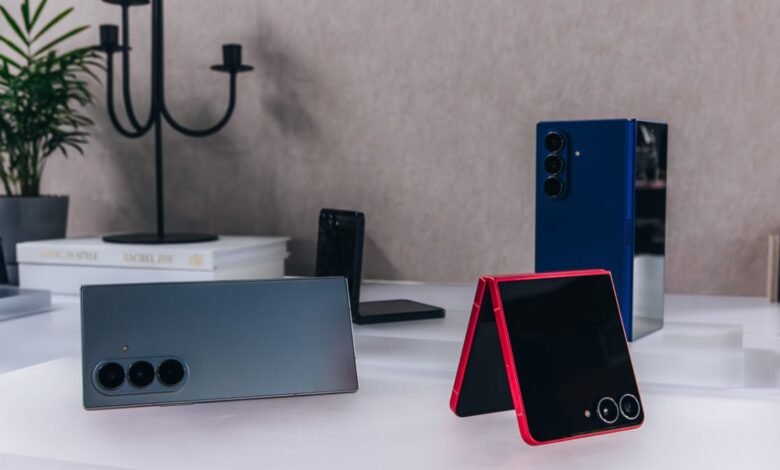8 Compelling Reasons to Switch from iOS to Android

▼ Summary
– Android phones offer greater variety with multiple brands and models available, including gaming-focused devices and foldable options.
– Android provides extensive customization through launchers, icon packs, and widgets, allowing users to personalize their home screens and interfaces.
– Android’s file management system is more flexible and compatible across operating systems, making it easier to organize files and use niche applications like emulators.
– The Android app ecosystem allows for greater diversity, including torrenting apps, multiple app instances, and sideloading capabilities for accessing unverified applications.
– Android devices typically feature faster charging speeds and earlier adoption of new technologies like high refresh rates and AI integration compared to iPhones.
For those considering a change from their iPhone, the world of Android presents a compelling array of features and freedoms that Apple’s ecosystem simply doesn’t match. While the latest iPhones have narrowed the gap in certain technical areas, Android continues to offer distinct advantages that appeal to users seeking more control, variety, and innovation in their mobile experience.
The sheer variety of choices stands out as Android’s most significant benefit. Instead of being limited to one manufacturer, you can explore devices from Samsung, Google, OnePlus, and many others. Beyond mainstream models like the Galaxy S25 or Pixel 10, specialized options exist for every interest, including gaming-centric phones like the RedMagic 10S Pro with built-in cooling fans or the stylish Nothing Phone 3. This competitive landscape means manufacturers pack unique features into their devices to stand out, and it also translates to a wider range of price points, with capable budget phones available for just a few hundred dollars.
Foldable phones remain an Android-exclusive innovation for the foreseeable future. These devices have matured beyond novelty status into genuinely practical tools. Major brands like Samsung, Google, and Motorola offer both horizontally and vertically folding models, providing the versatility of a compact phone that unfolds into a tablet. While representing the premium tier of the market, these foldables typically come equipped with top-tier specifications, offering a form factor that iPhones cannot yet replicate.
Personalization is where Android truly shines. The platform provides extensive customization options that go far beyond what iOS permits. Using a launcher, something iPhones lack entirely, you can completely transform your home screen and app drawer. Options range from minimalist interfaces like Niagara Launcher to feature-rich alternatives like Action Launcher. Beyond launchers, you can install custom icon packs, create unique widgets with apps like KWGT, and even change system fonts on some devices. Apps such as TruePick offer inspiration by showcasing stunning home screen designs and detailing the tools needed to recreate them.
File management on Android is notably more flexible. Unlike the restricted file system on iOS, Android offers robust and intuitive file organization. It works seamlessly with macOS, Windows, and Linux without requiring special software, and a multitude of file browser apps are available for download. This is particularly useful for niche activities, such as organizing ROMs for video game emulators, making it far simpler to keep your digital life in order.
The app ecosystem on Android is famously open. Users benefit from a more permissive and diverse selection of applications. Although Apple has recently begun allowing emulators and torrent clients in its App Store due to regulatory pressure, Android has supported these for over a decade. Many Android devices also allow you to run multiple instances of the same app, ideal for managing separate accounts. While sideloading apps from outside official stores remains an option for now, the overall availability of hyper-niche applications gives Android a clear edge in software freedom.
When it comes to power, Android phones generally offer significantly faster charging speeds. While the iPhone 17 Pro Max supports 40W wired charging, many Android devices surpass this easily. The Galaxy S25 Ultra charges at 45W, and the OnePlus 13 reaches an impressive 100W, enabling a full battery recharge in under an hour. Only the Google Pixel 10 lags slightly behind the latest iPhone in this regard. If you frequently need a quick power boost during the day, an Android handset will get you back to full capacity much more quickly.
Android has a long history of introducing operating system features well ahead of iOS. The platform consistently delivers cutting-edge functionality first, from NFC payments years ago to advanced AI integration more recently. Beyond the customization and file management already discussed, Android includes built-in guest mode, support for multiple user accounts, split-screen multitasking, floating app Bubbles, and a universal back gesture. Samsung users also enjoy DeX mode, which transforms the phone into a desktop computing experience.
Ultimately, Android empowers you to accomplish more with your device. It enables niche but impressive capabilities, such as using your phone’s internal storage to install Windows on a PC. While iPhones have their own strengths and enjoy immense popularity, Android retains a sense of frontier freedom. The platform’s flexibility and willingness to embrace unconventional uses make it an exhilarating choice for anyone who values having fewer limitations on what their smartphone can do.
(Source: Mashable)



